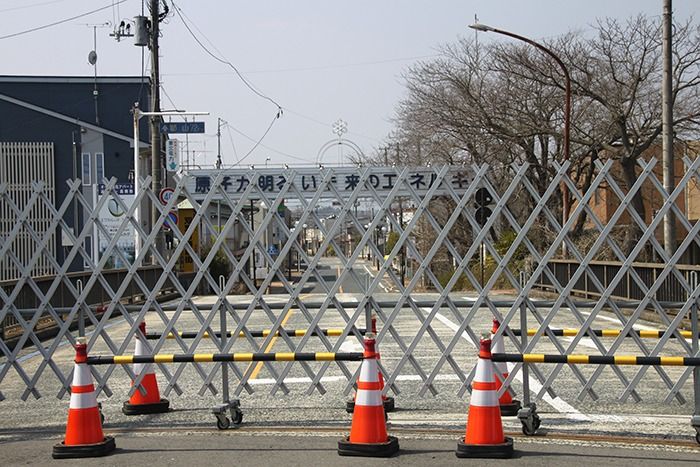Another victim of the pandemic: trust in the government
By Allison Macfarlane | April 13, 2020
 The weak and untruthful US federal response to the COVID-19 pandemic is reminiscent of the Japanese government's response to the Fukushima disaster.
The weak and untruthful US federal response to the COVID-19 pandemic is reminiscent of the Japanese government's response to the Fukushima disaster.
A few years from now, in the aftermath of this awful coronavirus outbreak, we will look back and examine which countries had successful responses and which responded poorly. Part of our analysis, as public policy experts, will be to look at which governments presented information to citizens that was perceived to be trustworthy and which failed the trustworthiness test.
Those governments perceived to provide trustworthy information would have been able to mount more rapid, coordinated responses, and the public would have more compliantly followed public health instructions, self-isolating, getting tested (if tests were available), wearing masks.
We can begin to reflect on some of these issues of trust already.
As a result of the internet, we are constantly flooded with information about this crisis, much of it conflicting and some of it flagrantly misleading. Purported cures for the virus are being sold online. The neighborhood listserv where I live in the Washington, DC, suburbs recently circulated the advice of a purported rheumatologist (unnamed) on how to survive a COVID-19 infection. Was it real? Was it accurate? A heated discussion broke out amongst the listserv members.
As I write, there is a growing discussion in the US media about the use of face masks to both reduce the spread of coronavirus and to prevent infection in the wearer. Contradictory advice had been staring us in the face for weeks: the Centers for Disease Control and Prevention (CDC) imploring the public not to wear masks because they won’t help, while doctors and nurses pleaded for more masks. Either they help or they don’t—we can’t have it both ways in the real world.
Clearly, masks do help, enormously. The real problem is that the country didn’t have many, so government agencies fed a white lie to the public: that masks won’t help. But now it’s becoming clear that countries that used masks extensively, like South Korea, China, and Japan, have had more success, “flattening the curve” accordingly as a result. Only now is the CDC reconsidering its advice.
The US federal response to the pandemic has been weak at best and dangerous at worst. The United States is one of the few countries (Brazil is another) whose citizens have been experiencing a sense of mental conflict about the virus response. Many state governors, city mayors, and county governments have put more and more virus response measures in place, closing schools, shuttering restaurants, bars, gyms, and theaters, leading to full-on lockdowns, while the Trump Administration has been ping-ponging around, suggesting that: the virus will prove no worse than the flu; the virus is serious; we will be back to business by Easter; now the virus is serious again. And still, there is no national response to the pandemic.
The situation is reminiscent of what Japan experienced in the aftermath of the Fukushima accident. In both cases, the government provided information that could not be trusted. In both cases, the result has been detrimental to public health and safety and democracy.
In the days and weeks after a 9.0 magnitude earthquake and massive tsunami on March 11, 2011 unleashed a “station blackout” at the Fukushima Dai’ichi nuclear power plant, the central Japanese government provided yo-yo responses as to what had happened—responses very similar to what the United States has offered in regard to the coronavirus pandemic.
First, the Japanese government said the accident wasn’t so bad; then as the whole world watched massive explosions at three of Fukushima reactors, the government began to evacuate people within 20 kilometers of the plant, while the US and Canada encouraged their citizens living 80 or fewer kilometers from the plant to leave. In the weeks after the accident, the Japanese government suddenly increased the allowable dose of radiation to nuclear workers from 100 to 250 millisieverts and for children from 1 millisievert to 20 millisieverts. (The average annual background radiation dose to an individual over one year in the United States, exclusive of medical procedures, is about 3.6 millisieverts.)
Shocked parents asked why, if the lower amount was considered a safe limit before, would the higher dose be fine all of a sudden?
In the aftermath of this event, it became clear even to government leaders that large errors had been made. The Japanese Diet released a report saying that the crisis had been “made in Japan” and that collusion between the nuclear industry, the regulator, and the government was at fault.
Japanese citizens lost trust in the central government. In large numbers, they bought their own Geiger counters to measure radiation in their homes and in fact found numerous radiation “hot spots” far from Fukushima, carried by wind and precipitation. In part because of public mistrust, to this day, of the 54 nuclear reactors that operated in Japan pre-Fukushima, only nine are online. Many more wait for prefectures and the new nuclear industry regulator to approve their restart. And many prefecture governors have been slow to trust the industry.
In pandemic response, as with the response to a nuclear accident, the ability of citizens to trust the information provided to them by government is an essential feature. But the US federal response to the coronavirus pandemic has generated a lack of trust in the Trump administration and its agencies, including those most needed to respond: the CDC, Health and Human Services, and Homeland Security. The result of this mistrust will be a painful, lengthier-than-warranted period of pandemic in the country, with many needless deaths. It could have been different—and hopefully we will put in place policies that ensure this uncoordinated response full of misinformation and miscommunication never occurs again.
Together, we make the world safer.
The Bulletin elevates expert voices above the noise. But as an independent nonprofit organization, our operations depend on the support of readers like you. Help us continue to deliver quality journalism that holds leaders accountable. Your support of our work at any level is important. In return, we promise our coverage will be understandable, influential, vigilant, solution-oriented, and fair-minded. Together we can make a difference.
Keywords: Coronavirus, Fukushima, pandemic
Topics: Analysis, Biosecurity, Nuclear Risk















The World Health Organization advises (6 April): ‘There is currently no evidence that wearing a mask (whether medical or other types) by healthy persons in the wider community setting, including universal community masking, can prevent them from infection with respiratory viruses, including COVID-19.’
https://www.who.int/publications-detail/advice-on-the-use-of-masks-in-the-community-during-home-care-and-in-healthcare-settings-in-the-context-of-the-novel-coronavirus-(2019-ncov)-outbreak
There is also no evidence to the contrary. Since we know so little about the virus, why not simply wear a mask until the facts are unequivocal? Why is that so difficult for people to understand? Think about the following scenario: A loved one of yours contracts COVID-19 and dies. Their contact with the virus is directly linked to you (that capability does exist). How would you feel? Would you think that you could have done more to prevent this tragic occurrence? Perhaps wear a mask? If your answers are all “NO”, then perhaps you are one of those individuals… Read more »
The above WHO guidance states: ‘The wide use of masks by healthy people in the community setting is not supported by current evidence and carries uncertainties and critical risks… ‘The following potential risks should be carefully taken into account in any decision-making process: • self-contamination that can occur by touching and reusing contaminated mask • depending on type of mask used, potential breathing difficulties • false sense of security, leading to potentially less adherence to other preventive measures such as physical distancing and hand hygiene • diversion of mask supplies and consequent shortage of mask for health care workers •… Read more »
In Australia and New Zealand the governments have recommended that healthy people do not wear masks. This increases the mask availability for front line workers and those that are ill . Very few people in both countries wear masks and the infection curve is well under control. Both have strong social distancing rules and limits on activities and gatherings (these are stronger in New Zealand). Most people follow these rules. In both Japan and Singapore, the governments acted early and wearing masks is very common. But, they now have excalating infection curves. At best the benefit of masks is small… Read more »
Jeez, who could’ve ever guessed that a braindead TV star wouldn’t know how to handle a crisis?